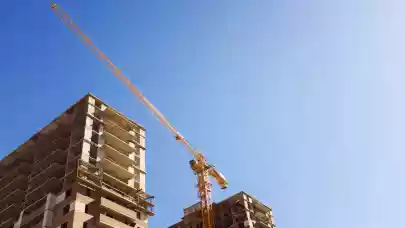
After declines in Polish non-residential construction in 2020 and 2021, PAB-PCR&F Institute, the Polish member of Euroconstruct, forecasts a growth of over 3% annually in 2022-2024.
Euroconstruct is an independent organization that brings together research institutions from 19 European countries.
Public non-residential construction is boosted by the government's New Deal programme, which supports municipal investment and private investors readily returning to CEE markets after the pandemic. This is an important sign for non-residential construction in Poland which accounts for more than half of the market in the region. However, the threat to the development of this construction segment is the same as for the industry as a whole. Rising construction costs are visible across the continent, but the Polish construction industry is additionally extremely vulnerable to the crisis caused by the war in Ukraine. It is related to the very high number of construction workers from Ukraine. In addition, inflation in Poland is significantly higher than the EU average.
Rebounding investment activity
Investor interest returned to the Polish market despite the pandemic in 2021 which negatively impacted business activities due to closures and travel restrictions. Last year the value of transactions in the market of the 4 Central Eastern European countries of Euroconstruct (Czechia, Hungary, Poland, Slovakia) reached €23 billion, an increase of 1.9% compared to 2020 (€22.5 billion). Poland maintained its dominant position in the CEE region with a record-high market share of 55% well above Czechia (16%) and Hungary (20%).
In Poland, 2021 ended with the third-best investment result in history despite the prevailing pandemic. PAB-PCR&F found that almost half of the investments went to the warehouse area and another 25% to the office area - mainly in Warsaw. In terms of the origin of the invested capital, 50% came from Western European investors - from Germany, Sweden, France, and Austria, and 14% from the USA and Canada. Central European capital was available for Polish real estate in the amount of €0.5 billion, which corresponds to a market share of about 8% - a similar level to capital from the Far East.
Offices
The office sector was revived in a new form and despite the popularisation of the work-from-home scheme and hybrid work, the situation in the office sector is stable. However, the way space is used is changing; tenants decide to renew their contracts and change the layout of the space to suit the needs of employees in the new market environment. Some companies downsize the space and maximise its use. There is an increasing trend towards co-working spaces as companies create more space for joint work, integration and meetings. It is expected that there will be a supply gap in the next two years as a small number of projects are currently under construction.
Rising construction costs, in connection with high inflation and rising interest rates, are not a good environment for investors to become active. Prices of building materials, services, land and wages are also rising, and we can expect this trend to continue until the end of 2022. It is estimated, for example, that the cost of delivering an office building to the market has risen by over 30% since the start of the pandemic.
Warehouses
In the warehouse market, the reallocation of sales and deliveries has become a springboard for records. The pandemic has accelerated the development of the warehouse property market and a record amount of space is under construction throughout Poland. The historically very high demand is followed by an equally very high supply. This tendency will also be visible in 2022 due to the further development of e-commerce and nearshoring, locating production closer to the outlet zone and striving to shorten the supply chain. Developers are also noticing great interest in last-mile logistics facilities located close to large urban agglomerations and they will implement such projects more likely. These facilities are popular among distributors and courier companies due to the boom in e-commerce.
Energy efficiency and floor space in non-residential buildings last year
The efficiency of buildings, their emissivity, and the comfort they offer their users, which is confirmed by certificates, have become an important issue for investors. The environmental aspect is just as important as the financial gain in projects in the face of climate change and, within the framework of EU directives, influences business decisions to a large extent. Sustainable investments achieve higher market valuations and are better rated by financial institutions. There is a desire to reduce operating costs and minimise the impact on the environment by using energy-saving solutions.
The future of the non-residential market in Poland
In 2022 and the following years, PAB-PCR&F Institute forecasts a rebound in non-residential construction activity. After declines in 2020 and 2021, we predict that the value of new non-residential construction in 2022-2024 will grow on average by 3%-3.7% annually. The dynamics of investments, especially in the public sector, will be boosted by the inflow of funds under the support of the New Deal programme and the implementation of many investment projects by local governments. On the other hand, the prospects for domestic investment are negatively affected by the military aggression of Russia against Ukraine, leading to increased uncertainty, a rise in commodity prices, and a sharp increase in material and construction product prices. Moreover, there is a shortage of construction workers and a significant increase in hourly labour costs. As a result, overall construction costs are also rising, partly due to the increase in energy and fuel prices.



